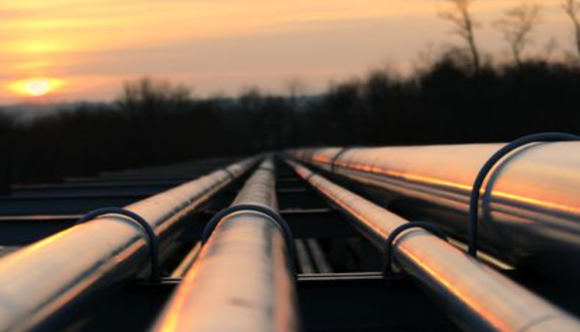Overview
Leak detection awareness has grown in recent years. The leak detection including pipeline leak detection market for oil & gas is estimated to be USD 2.1 billion in 2020 and is projected to reach USD 3.0 billion by 2025; it is expected to grow at a CAGR of 7.8% from 2020 to 2025.
The growth is spurred by hundreds of incidents — small and large as a result it has stimulated the adoption of Pipeline Leak Detection Systems. A recent example of a pipeline leak is Northern Natural Gas had a three hour pipeline leak in Oklahoma. The company estimated the release involved about 21.8 million cubic feet of natural gas containing methane. One report said the emission had the same short-term climate-warming impact as the annual emissions from more than 7,700 vehicles in the U.S.
Methane Leaks
The United States maintains about 2 million miles of natural gas distribution mains and pipelines, 321,000 miles of gas transmission and gathering pipelines, 175,000 miles hazardous liquid pipeline, and 114 active liquid natural gas plants that are connected to natural gas transmission and distribution systems. Monitoring these pipelines for methane pipeline leak detection is a high priority for Operators.
1. What is methane?
It’s an invisible, odorless gas that, like carbon dioxide, traps solar energy as it’s radiated back toward space from the Earth’s surface.
2. Where do methane emissions come from?
Methane is the primary component of natural gas, and leaks can happen anywhere along the natural gas supply chain, from the wellhead to the homes and businesses where the fuel is burned.
3. Why the focus on fossil fuels?
Leaks from energy infrastructure including pipelines are the easiest and cheapest sources of methane to identify and fix.
For decades, producers and regulators relied on crude techniques like throwing a tarp over a pipe to see if it bubbled or sending workers out to inspect equipment. Leak detection is entering the digital age, with satellites used to spot the biggest sources of methane while drones, aircraft and ground-based monitors find smaller points of emission.
5. Why the focus on methane leaks?
Methane traps more than 80 times the heat that the same amount of carbon dioxide does in its first two decades in the atmosphere. But it degrades rapidly, meaning that action taken now can have an almost-immediate cooling effect on the Earth’s temperature.
Oil & Gas Operators Tackle Methane Leaks
The Global Methane Pledge — a collective commitment to cut emissions of the potent greenhouse gas 30% by 2030 -– is signed by more than 80 countries so far, representing more than two-thirds of the global economy. With the energy transition underway, many Oil & Gas Operators are moving toward greener operations. Programs being implemented to minimize fugitive emissions by the oil & gas industry include; environmental, social and corporate governance (ESG), environmental management system (EMS), and leak detection and repair (LDAR).
- Pioneer Resources Net Zero ambition by 2050 for both Scope 1 and Scope 2 and enhanced emissions reduction targets for greenhouse gas (GHG) and methane.
- ConocoPhillips has actively supported direct federal regulation of methane emissions from both new and existing sources and plans a 10% reduction of methane by 2025 from a 2019 baseline.
- Diamondback Energy, Inc. released its 2021 Corporate Sustainability Report long-term target to reduce methane intensity by at least 70% from 2019 levels by 2024
- Ovintiv has set a 33% methane intensity reduction target by 2025
- Energy Transfer has been reducing its greenhouse emissions; these efforts include the installation of its Dual Drive Compression system, vapor recovery units and stabilizers at natural gas process plants, to thermal oxidizers and direct injection systems to reduce or prevent methane emissions.
- Kinder Morgan 2016, set a goal of achieving an intensity target of 0.31% of methane emissions per unit of throughput by 2025 for our natural gas transmission and storage assets and have surpassed this target every year since 2017.
- Nustar Control Center monitors with enhanced programs to proactively identify and avoid releases through a Automatic Leak Detection system and flow and pressure monitors.
Oil & Gas Industry leak detection programs are used to inspect fugitive components to identify leaks either by using instruments or in limited cases, by physical inspections. It is these programs that will allow oil & gas operators to achieve methane reduction goals.
What is a Pipeline Leak Detection System for Methane?
Preventing incidents before they occur is a critical component of pipeline detection systems ongoing commitment to safety. This means recognizing conditions that have been known to cause failures in the past—including third-party excavation damage, external corrosion, and cracking or denting—and then working to minimize the risk. It also means adopting the most advanced leak prevention technologies available, following environmentally sound construction practices, and taking a proactive approach to training, inspection, testing, and repair.
Key pipeline leak prevention methods include:
- In-line inspections – regularly scheduled inspections using in-line inspection tools, allows for monitoring the health of pipeline systems from the inside out. These ultra-high-tech tools use imaging technology, with a level of detail similar to that of MRIs, ultrasound, and X-ray technology in the medical industry.
- Corrosion – prevent any corrosion of the steel in our pipelines using anti-corrosion coatings, cathodic protection (application of a low-level electrical current), and interior cleaning of pipes.
- Public awareness – Third-party damage is one of the leading causes of pipeline leaks. Educate the public , and make sure they know how to stay safe around—and avoid accidentally damaging pipelines.
- Aerial and ground patrols – fly over liquids pipeline rights-of-way, watching out for potential issues and groundbased surveys, including patrols on foot and in vehicles, use GPS and advanced imaging technology to check the depth and position of our pipelines, and detect ground movement.
- Maintenance digs – a preventative maintenance dig (or visual inspection) to determine whether a repair or other action is required.
A commitment to pipeline leak detection tools
Monitoring pipelines for possible leaks using multiple methods, each with a different focus and each using different technology, resources, and timing. Together, these methods provide overlapping and layered leak detection capabilities:
- Controller monitoring – Supervisory Control and Data Acquisition (SCADA) system is designed to identify operational changes, such as pressure drops, that may indicate a leak. This SCADA system also monitors vapor concentrations, pump-seal failures, equipment vibration levels, and sump levels.
- Computational pipeline monitoring – constantly monitor pressure, temperature and other key data from thousands of points along pipeline systems to quickly identify and respond to unexpected changes. Computer-based systems use measurements and pipeline data to detect anomalies that could indicate possible leaks.
- Scheduled line balance calculations— Many times a day, at regularly scheduled intervals, calculate and confirm that the volumes of crude oil received into pipeline systems precisely matches the volumes delivered.
- Visual surveillance – conduct regular aerial and ground line patrols, and operate emergency telephone hotlines for third-party reports
- Acoustic emission inline inspections — state-of-the-art monitoring technology also includes sensitive acoustic devices, in-line inspection tools, that “listen” for leaks.
- Negative Pressure Wave – (NPW) based leak detection is emerging as an extremely cost-effective and real-time technique, especially among operators whose capital budgets have shrunk during the recent low-price market environment. Simply put, when a spontaneous leak occurs, a rapid decrease in oil or gas density creates a negative pressure wave from the leak location that disseminates along the path of product flow in both the upstream and downstream directions. Installing specialized sensors (i.e., nodes) at multiple locations along the pipeline enables a more precise location (to within +/- 20 feet) to be determined from measuring the time it takes for a wave to reach a sensor. As the pressure wave travels at a high rate of speed, leaks can be detected within seconds.
Conclusion
With nearly 3,000 serious pipeline accidents in the past ten years — defined by fatalities, injuries, fires, explosions, or liquid releases of 50 bbls or more — amounting to over US $7 billion lost, the expanded pipeline leak detection regulations are clearly intended to reduce risks. A Global Methane Pledge — a collective commitment to cut emissions of the potent greenhouse gas 30% by 2030 -– is signed by more than 80 countries and requires Operators to focus on the reduction of pipeline leaks that can result in global warming. Operators are building leak detection programs that include prevention programs and a multilayer detection programs.
Methane Reduction News



